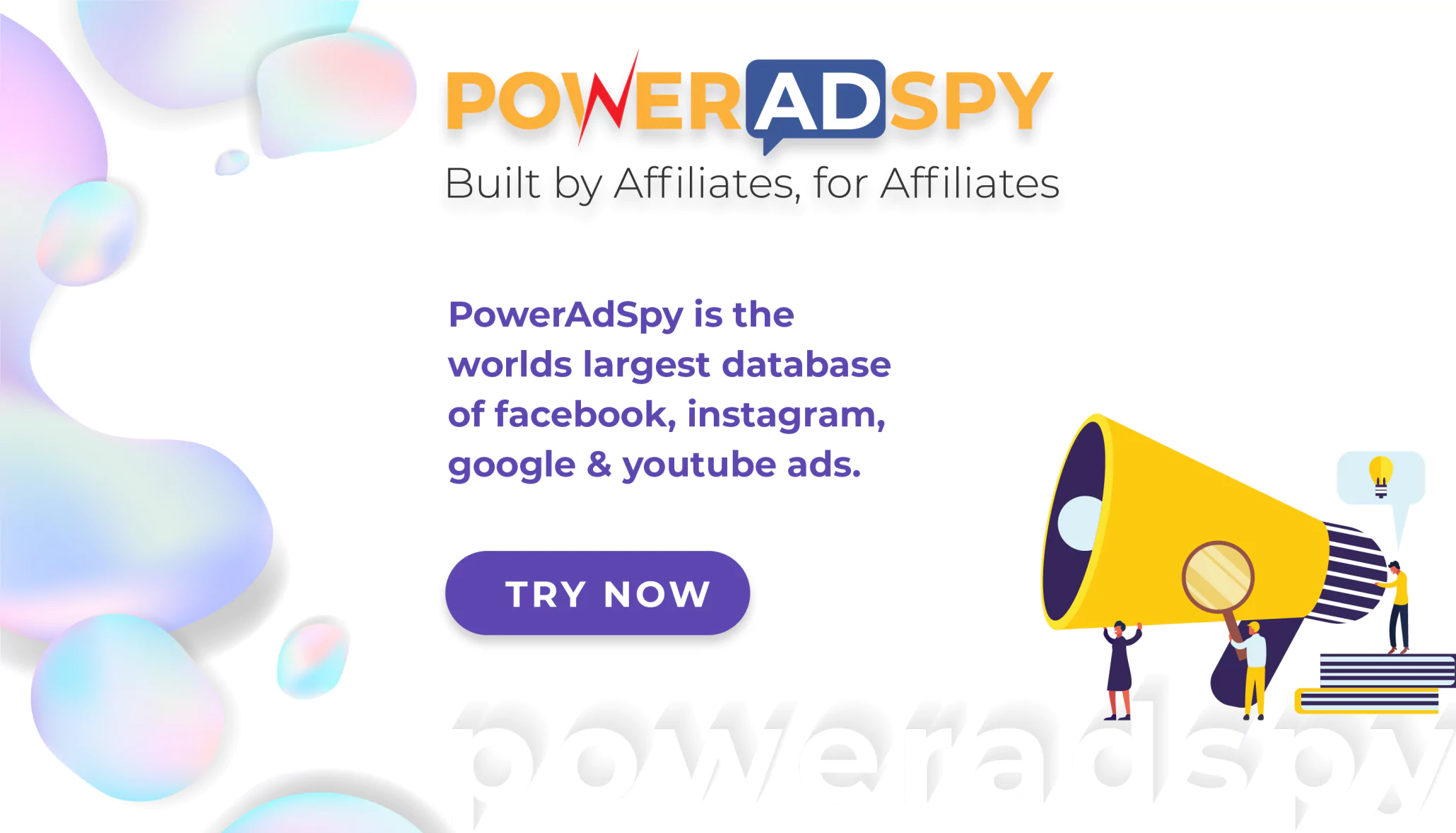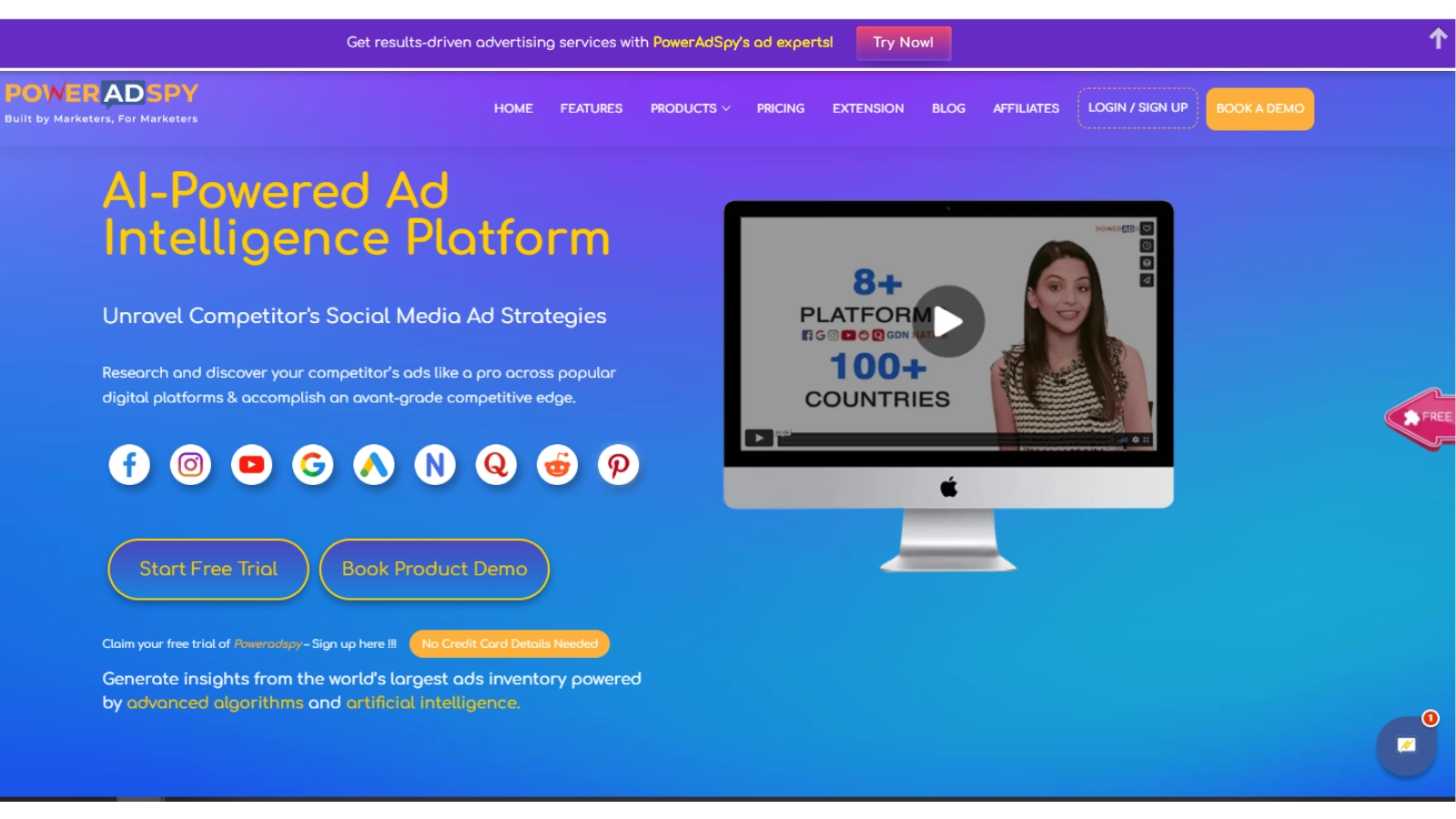7 Strategies for Decoding Competitor Ads
In today’s digital marketing world, where the online world is constantly changing, staying ahead of the competition is key. Within this fiercely competitive arena, rivals are continually refining their advertising strategies in a bid to gain the upper hand.
By diving deep into this topic, you’ll gain the insight you need to thoroughly analyze your competitor ads strategies, decipher their genius, and uncover the keywords that fuel their success.
This immersive experience will equip you with the insights required to reimagine your Facebook marketing approach. Ultimately, these strategies have the potential to reshape your brand’s trajectory, propelling it to unprecedented heights in the fast-paced, ever-evolving digital landscape.
In this blog, we are going to decode 7 strategies for analysing competitors’ ads. So, let’s not wait and dive deep into it!!
Listen To The Podcast Now!
Understanding the Significance of Decoding Competitor Ads

Competition in the digital landscape is fierce. Businesses are constantly vying for the attention of their target audience, and advertising is one of the primary weapons in their arsenal.
To be successful, not only do you need to make great ads, but you also need to keep an eye on what your competition is doing. Here’s why decoding competitor ads is crucial:
Identifies Trends:
Analyzing competitor’s ads allows you to spot emerging trends in your industry. This insight can be invaluable when adapting your advertising strategies to align with what’s currently resonating with your audience.
Discovers Ad Inspiration:
Competitor’s ads campaigns can serve as a wellspring of inspiration for your own marketing efforts. By studying their creative approaches, messaging, and design choices, you can gain fresh insights and ideas to elevate your ad campaigns and captivate your audience in new and exciting ways.
Identifies Market Gap
Competitor ads analysis, especially with tools like PowerAdSpy, enables you to pinpoint gaps and shortcomings in your advertising strategy. By comparing your efforts to those of your rivals, you can identify areas where you may be falling short and make data-driven adjustments to fill those gaps, ultimately enhancing your market position.
Sets Benchmark:
Competitive advertising tracking establishes a benchmark for your advertising goals. It helps you set realistic expectations and performance metrics by evaluating how your campaigns measure up against industry peers.
This benchmarking process is instrumental in tracking your progress and continually refining your advertising strategies for optimal results.
Now that we know why decoding competitors’ ads is so important, let’s look at some of the tactics you can use to do it right.
Strategy 1: Utilize Competitive Analysis Tools

In the quest to gain a competitive edge in the digital marketing arena, one of the most potent weapons at your disposal is the utilization of competitive analysis tools. You can use tools to get access to a ton of data that could change the way you do effective advertising.
Spy on Your Competitors:
These tools allow you to discreetly observe your competitors’ ad campaigns, dissecting their every move. You can uncover their ad creatives, the demographics they target, and even the keywords they prioritize.
Unearth Winning Strategies:
Through in-depth analysis, you can determine which advertising tactics work best for your competitor’s ads. This invaluable knowledge can serve as a blueprint for your campaigns.
Stay Informed in Real-Time:
With the help of competitive analysis tools that offer ads analytics, you can be sure that you will not miss any new developments or changes in the strategies of your competitors.
Optimize Your Budget:
Understanding what works for your competitors can help you allocate your advertising budget more effectively. You can focus on the strategies that promise the highest return on investment.
Tools like PowerAdSpy can be your trusted allies to do precise in-depth ad research. It gives you advertising insights that allow you to break down your competitor’s ads, keeping you ahead of the competition and driving your digital marketing success.
PowerAdSpy: AI-Based Ad Intelligence Tool
PowerAdSpy is a robust and user-friendly AI-based tool designed to empower marketers and advertisers with comprehensive competitor ad intelligence. From Facebook ads to Google shopping ads it has 100+ million ads.
The tool enables you to gain a competitive edge by unveiling your competitors’ advertising strategies, all without the need for costly third-party software.
Here are some key features of PowerAdSpy for your better understanding:
- Effective Ad Monitoring: Track and monitor advertisements across various online platforms, including social media, search engines, and display networks.
- Al-based Ad Filtering: Refine ad searches using filters, such as keywords, advertisers, ad types, ad positions, and engagement metrics, to find specific and relevant ads.
- Better Ad Creative Analysis: View and analyze ad creatives, including images, headlines, ad copy, and call-to-action buttons, to gain insights into competitors’ messaging and design strategies.
- View Ad Performance: Access data on ad performance metrics like click-through rate (CTR), engagement, conversion rates, and impressions to assess the effectiveness of different ad campaigns.
- Demographic Targeting: Discover the demographics and audience interests that your competitors are targeting with their ads. This information can be invaluable in refining your own audience segmentation.
So get ready and make competitive analysis tools a part of your plan for a better future in marketing.
Strategy 2: Explore the Facebook Advertising Library

When it comes to deciphering your competitor’s ads strategies, the Facebook Ads Library stands out as a goldmine of information. This robust tool can be your secret weapon in staying ahead of the curve in the digital marketing battlefield.
Here’s how you can harness its power:
In-Depth Competitor Analysis:
The Facebook Advertising Library provides a treasure trove of data on your competitors’ ad campaigns. You can delve deep into their advertising strategies, examining the types of ads they run, the frequency, and the content they promote.
This comprehensive analysis allows you to gain a thorough understanding of your competitors’ tactics and positioning in the market.
Creative Inspiration:
The library serves as a wellspring of creative inspiration. By perusing your competitors’ ad creatives, you can identify design trends, messaging styles, and storytelling approaches that resonate with audiences.
This can spark innovative ideas for your own ad content and visuals, helping you stay fresh and engaging.
Ad Performance Insights:
Facebook’s library often provides engagement metrics, such as the number of likes, shares, comments, and reactions. By evaluating these performance indicators for your competitors’ ads, you can gauge the effectiveness of their campaigns.
This information can guide you in fine-tuning your own strategies and understanding what resonates with your target audience.
Ad Spend Estimations:
While not precise, the library can offer rough estimates of your competitors’ ad spend. This insight allows you to assess the resources they allocate to specific campaigns and platforms.
It can help you make informed decisions about your own competitive ad budget allocation and competitive positioning.
Demographic Targeting:
Facebook’s library may reveal valuable demographic information about your competitors’ audiences. Understanding the demographics they are targeting can aid in refining your own targeting parameters, ensuring your ads reach the right people with precision.
Ad Transparency:
One of the primary advantages of the Facebook Advertising Library is its transparency. It allows you to see the ads your competitors are running, which can help prevent ad fraud and maintain a level playing field in the advertising ecosystem.
Incorporating these insights from the Facebook Advertising Library into your competitive analysis and strategic planning can provide a significant advantage in optimizing your advertising efforts and staying ahead in the digital advertising landscape.
Strategy 3: Identify Your Competitor Ads Target Audience

Understanding your competitors’ target audience is vital for tailoring your own ad campaigns. Here’s how you can go about it:
Analyze Ad Copy:
Look closely at the language and messaging used in your competitors’ ads. What pain points or desires are they addressing? This can give you clues about the demographics and psychographics of their target audience.
Check Ad Placement:
Take note of where your competitors are placing their ads. Are they targeting specific websites, apps, or social media groups? This can provide insights into the online spaces where their audience hangs out and saves you from falling into the common pitfalls in curating discovery ads.
Monitor Engagement:
Pay attention to the engagement metrics on your competitors’ ads. Who is liking, sharing, or commenting on their posts? This can help you understand the type of people who are most responsive to their content.
Strategy 4: Analyze Ad Creatives & Copy

The creative elements of an ad play a significant role in its success. Here’s how to decode your competitors’ ad creatives and copy:
Visual Elements:
Examine the images or videos used in your competitors’ ads.
- What visual storytelling techniques are they employing?
- Are they using user-generated content, product demonstrations, or lifestyle imagery?
Ad Copy:
Read through the ad copy carefully. Note the tone, style, and length of the text. Are your competitors using emotional appeals, humour, or data-driven messages? Understanding their copywriting style can inform your own content creation.
CTAs (Call to Action):
Take note of the CTAs in your competitors’ ads. Are they using direct commands like “Buy Now” or more subtle language like “Learn More”? Analyzing their CTAs can help you fine-tune your own.
Strategy 5: Track Ad Performance Metrics

To gain a holistic understanding of your competitors’ ad strategies, you should keep a close eye on their ad performance metrics. Here are some key metrics to monitor:
Click-Through Rate (CTR):
CTR is a crucial metric that measures the effectiveness of your ads in getting users to click on them. It’s calculated by dividing the number of clicks by the number of impressions and is expressed as a percentage.
A high CTR indicates that your ad copy, design, and targeting are resonating with your audience, while a low CTR may signal the need for optimization.
Conversion Rate:
Conversion rate measures the percentage of users who take a desired action after clicking on your ad, such as making a purchase, signing up for a newsletter, or filling out a contact form.
This metric is a key indicator of the ad’s effectiveness in driving valuable actions. It’s calculated by dividing the number of conversions by the number of clicks.
Ad Spend:
Ad spend refers to the total amount of money you invest in your advertising campaigns. It’s essential to track ad spend to ensure you stay within budget and allocate resources effectively.
Monitoring this metric helps you assess the cost-effectiveness of your campaigns and make adjustments as needed to maximize ROI.
Engagement Metrics:
Engagement metrics encompass a range of data, including likes, shares, comments, and reactions on social media platforms. Tracking these metrics helps you understand how well your ad resonates with your audience and can indicate the level of interest and interaction your ad generates.
Ad Schedule:
Ad schedule, also known as dayparting, involves determining the specific days and times when your ads will be displayed. Tracking ad schedule performance metrics helps you identify when your Facebook target audience is most active and responsive to your ads.
This data can inform your scheduling decisions, allowing you to allocate budget and impressions during Facebook target audience peak engagement periods.
Strategy 6: Reverse Engineer Landing Pages

The ultimate goal of most advertising campaigns is to drive users to a landing page where they can take a specific action, such as making a purchase. By reverse engineering your competitors’ landing pages, you can gain insights into their conversion strategies.
Here’s how to do it:
Click Through the Ad:
Start by clicking on your competitors’ ads to reach their landing pages. Take note of the page layout, design elements, and content.
Analyze Conversion Path:
Identify the steps your competitors are guiding users through to achieve the desired conversion. This could involve sign-up forms, product pages, or checkout processes.
Assess User Experience:
Evaluate the user experience on the landing page. Is it intuitive and user-friendly? Are there any trust-building elements like customer testimonials or security badges?
Capture Key Messages:
Pay attention to the key messages and value propositions presented on the landing page. What are your competitors emphasizing to persuade users to convert?
Read More:
Life Insurance Advertising Trends: Stay Informed With PowerAdSpy
Facebook Marketplace Ads: 10X The Power Of Online Selling
6 Facebook Ad Targeting Tips To Increase Conversions
How Facebook Ad Targeting Can Fuel Your Business Growth in 2024
Strategy 7: Stay Updated & Iterate About Competitor Ads
Competitor ad analysis isn’t a one-time task; it’s an ongoing process. Your competitors’ strategies will evolve, and consumer preferences will change. To stay ahead, make it a habit to:
Regularly Monitor Competitor Ads:
Continuously track your competitors’ ad campaigns to spot any new tactics or messaging.
Experiment and Adapt:
Incorporate the insights gained from competitor analysis into your own ad strategies. Experiment with different approaches to see what resonates best with your audience.
Benchmark Your Performance:
Periodically compare your ad performance metrics with those of your competitors to gauge your progress and identify areas for improvement.
Incorporate Feedback:
Encourage your team to provide feedback on competitor ads. Different team members may notice unique aspects or opportunities for improvement.
Conclusion
Decoding competitor ads is a vital component of a successful digital marketing strategy. By using tools like PowerAdSpy and exploring resources like the Facebook Advertising Library, you can gain valuable insights into your competitors’ advertising efforts.
Additionally, analyzing Facebook’s target audience, creatives, copy, and performance metrics will help you refine your own campaigns. Remember that the key to practical competitor ad analysis is not to mimic your rivals but to leverage their strategies and insights to inform your own unique approach.
Stay vigilant, adapt to changes in your industry, and continuously refine your advertising strategies to maintain a competitive edge in the dynamic world of digital marketing.
So, harness the power of competitor ad decoding to propel your business forward, and watch your advertising efforts soar to new heights.







